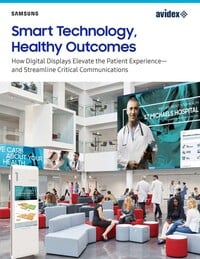BILL & MELINDA GATES CENTER FOR COMPUTER SCIENCE & ENGINEERING
Tribute Wall Employs Interactive Storytelling to Inspire Students
Computer science and technology are booming fields in the Pacific Northwest and especially Seattle, and with this growth comes an increasing demand in higher-education. With the addition of the Bill & Melinda Gates Center for Computer Science & Engineering (Gates Center), the University of Washington has positioned itself to attract a new generation of students and prepare them for the world of the future. The state-of-the-art facility opened in January of 2019 adjacent to the existing Paul G. Allen Center for Computer Science & Engineering and will enable the Paul G. Allen School of Computer Science & Engineering (Allen School) to double its annual degree production.
The Gates Center allows students access to leading equipment such as a 3,000-square-foot robotics lab, workrooms for the interdisciplinary computer animation capstone, a wet lab for molecular information systems, a sophisticated fabrication research space, and more. These amenities are housed in a brand new 135,000-square-foot building that includes a 240-seat auditorium.
While expanding education and research opportunities for students in computer science is the cornerstone of the new facility, the Gates Center is also designed to inspire the next generation of technological innovators. At the heart of this very purpose is the Tribute Wall, an interactive media experience that invites students to become part of the Pacific Northwest's computing history. Located in the building's main atrium and created by media experience designer Belle & Wissell in close collaboration with LMN Architects and the Allen School, the video wall gracefully integrates with the building as an artful architectural element yet comes to life with interactive storytelling as visitors approach the massive touch surface.
The Tribute Wall is a 25-foot-long, 8-foot-high Clarity® Matrix® MultiTouch LCD Video Wall System in a 6x3 configuration from Planar. Featuring the latest touch technology and a modular protective touch surface, the Clarity Matrix MultiTouch is an ideal solution for the Gates Center atrium environment. The Clarity Matrix MultiTouch enables up to 32 touch points and allows multiple users to simultaneously interact with the video wall without affecting other users. In addition to allowing simultaneous touches, the Clarity Matrix MultiTouch also provides a better touch experience by enabling pin-point accuracy and preventing false touch points.
A responsive experience
When not in use, the Tribute Wall assumes what's called abstract canvas mode, blending in with the vertical architecture of the building and the color tones of the surrounding interior woodwork. In this passive mode setting, the wall employs code-driven generative visuals to shift between an array of color palettes, motion settings, shapes, lighting effects and typographic phrases to attract students.
As people approach, sensors embedded at the base of the video wall can identify when somebody is near, triggering the wall display to nod to them using visual signals. "The idea of this responsive experience is for the Tribute Wall to acknowledge a person's presence, inviting them to participate," said Belle & Wissell principal Gabe Kean. "At that point, storyhooks begin to appear on the video wall, encouraging touch." With the tap of a finger, the Tribute Wall shifts to interactive story mode, revealing interactive stories that appear as curtains of content. Over 100 stories were developed by Belle & Wissell (with an array of contributing content partners) and a custom-built content management system was implemented to author, arrange, and publish stories in a variety of layouts.
According to Kean, the distributed architecture design of the Clarity Matrix—which off-boards the power supplies, thus removing heat, noise, complexity and ensuring the slimmest profile—was beneficial in creating more of a natural experience. "Perceived noise and heat to the touch is minimized, removing those distractions," he said.
Motivating students through interactive stories
The stories profile the long history of tech innovation in the Pacific Northwest; the University of Washington's role in computing history, invention and entrepreneurship in the region; and how diversity in the field has improved at the Allen School and in the industry. The Tribute Wall also tells the story of Bill and Melinda Gates and Paul Allen. "These were two kids with very audacious dreams, and they went on to change the world," said Ed Lazowska, Bill & Melinda Gates Chair in the Paul G. Allen School of Computer Science & Engineering at the University of Washington.
"By telling this story and others, we hope to instill that same level of aspiration in future generations. The Tribute Wall is such a tremendous tool for using storytelling to inspire students to pursue their own dreams."








